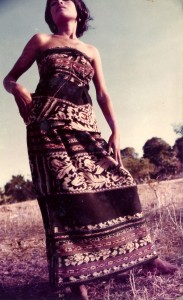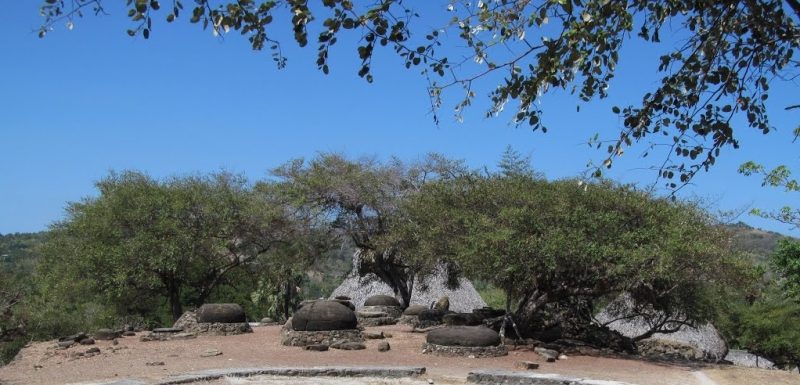On his first voyage to the South Pacific, Captain James Cook dropped anchor at Savu, an island that did not appear on any of his charts, and stayed for five days. As a cartographer, Cook could not resist the urge to map out the entire island, and ordered his ship, the Endeavour, to be anchored off the island’s west coast.
Not only did Cook put Savu on nautical charts, but he also collected information on its physical layout, the inhabitants and their social organisation and livelihood. For a long time Cook’s journal remained the main source of information on the island. The wide range and depth of the data and information collected is truly astonishing, although it must be remembered that Cook was accompanied by the naturalist and botanist Joseph Banks, the naturalist and doctor Daniel Solander, the astronomer Charles Green, and four artists.
On Savu they recorded A particular description of the Island of Savu, its produce and inhabitants, with a specimen of their language, Chapter IX – Book III, James Cook, An Account of the Voyages for Making Discoveries in the Southern Hemisphere.
Cook was obviously a keen and very interested observer. He notes that the dress of both sexes consists of cotton cloth [which] they manufacture themselves … and two pieces, each about two yards long, and a yard and a half wide, make a dress: one of them is worn round the middle, and the other covers the upper part of the body. He then adds that, the difference between the dress of the two sexes consists principally in the manner of wearing the waist-piece.
It is rather interesting to note that 200 years after this observation was made, the dress code had not changed, which most likely is due to the island’s long-standing isolation.
I went there some 40 years ago, hitching a ride on a Missionary Air Service plane. Savu has recently been elevated from sub-district to kabupaten level. The district consists of three islands: Rai Hawu (Savu), Rai Jua and the uninhabited Rai Dana— rai is the word for island in the local language.
The island is of a stark arid beauty. Cook seemed to have been greatly impressed by it. Later visitors, however, less so – the missionary J.K. Wijngaarden, for example, described it as “a lump of stone in an immense sea”. The main rains fall between November and March; during the long dry season most rivers dry up and water has to be drawn from a few remaining wells. The island is for the most part covered in grassland, coconut and fan palms, with some stands of tamarind, citrus and mangoes. Rice and mung beans are grown, too.
Special mention has to be made of the fan-palm, or lontar. Every part of this palm is used – the trunk for the construction of houses and bridges, while the leaves are made into roofing material, buckets and musical instruments. But the lontar’s main use is its juice, which in Cook’s words: …is procured from this tree, by cutting the buds which are to produce flowers, soon after their appearance, and tying under them small baskets made from the leaves, which are so close as to hold liquids without leaking.
The liquid is the common drink on the island and, during the tapping season, is collected morning and evening. Apart from drinking, the liquid is also condensed into syrup or coarse sugar. During the dry season, when other crops are scarce, the syrup is the main food for the population and, mixed with rice husks, for their livestock.
Cook also mentions the ceremonial stones he saw on a hilltop near Seba, the current capital of the district and the bay where Cook anchored. Cook compared these megaliths to Stonehenge and took them to be monuments erected by previous rulers. He also wondered how the stones had been erected there: Many of the stones are so large, that it is difficult to conceive by what means they were brought to their present station, especially as it is the summit of a hill.
I also visited the stones and had read in Harvest of the Palm, by James J. Fox, that these stones are, in fact, sacrificial altars of the priests of Seba.
Savu’s territorial parts are not identified by their rulers, but by their priestly order. The Deo Rai, Lord of the Earth, is the highest ranked, and the Descendant of the Sun, Apu Lodo, is ranked second. Their responsibilities are to conduct the ceremonies that are associated with the agricultural and tapping cycles. In Seba, for instance, the Deo Rai is identified with the mung bean and the Apu Lodo with rice, while in Liae the former is responsible for the whole agricultural season and the Apu Lodo for the lontar-tapping season.
On my visit I met with the Apu Lodo of Seba and I took the opportunity to ask him about the stones, and in particular how the stones were brought to this hill. His answer was a very decisive and unwavering: “My forefathers called the stones from the sea!”
I used the stones as a backdrop for a photoshoot of the island’s ikat textiles, modelled by the girls I had pointed out to the camat during the previous night’s welcome dances. Another example of calling-power, so to speak, although it did not stop the girls from complaining loudly and saying that they wanted to go home after having posed for nearly two hours.
For those who are not familiar with ikat, the wrap is dyed in the desired pattern before it is put on the loom. A tie-dye technique, in fact, and if the cloth is meant to have several colours, this has to be repeated for each colour. Consequently the whole process, from dying to weaving, may take up to four months.
Fast facts
Where to stay
Hotel Rai Hawu, Km.14 Desa Eilode, Savu Tengah. Simple, no frills accommodation.
But a recent visitor to the island recommended that as soon as you get off the plane, just ask anyone where to stay and someone will accommodate you immediately.
How to get there
Take the ferry from Kupang, Timor, or from Waingapu, Sumba.
What to do
Savu has many pristine white sand beaches. Surfers usually come to Uba Ae beach in Mesara. This beach is also known as a venue for the public.




